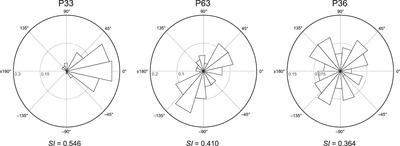Our official English website, www.x-mol.net, welcomes your
feedback! (Note: you will need to create a separate account there.)
Sensorimotor and working memory systems jointly support development of perceptual rhythm processing
Developmental Science ( IF 3.1 ) Pub Date : 2022-03-28 , DOI: 10.1111/desc.13261 Hyun-Woong Kim 1, 2, 3 , Kyung Myun Lee 4, 5 , Yune Sang Lee 1, 3, 6
Developmental Science ( IF 3.1 ) Pub Date : 2022-03-28 , DOI: 10.1111/desc.13261 Hyun-Woong Kim 1, 2, 3 , Kyung Myun Lee 4, 5 , Yune Sang Lee 1, 3, 6
Affiliation

|
We studied the role of sensorimotor and working memory systems in supporting development of perceptual rhythm processing with 119 participants aged 7–12 years. Children were assessed for their abilities in sensorimotor synchronization (SMS; beat tapping), auditory working memory (AWM; digit span), and rhythm discrimination (RD; same/different judgment on a pair of musical rhythm sequences). Multiple regression analysis revealed that children's RD performance was independently predicted by higher beat tapping consistency and greater digit span score, with all other demographic variables (age, sex, socioeconomic status, music training) controlled. The association between RD and SMS was more robust in the slower tempos (60 and 100 beats-per-minute (BPM)) than faster ones (120 and 180 BPM). Critically, the relation of SMS to RD was moderated by age in that RD performance was predicted by beat tapping consistency in younger children (age: 7–9 years), but not in older children (age: 10–12 years). AWM was the only predictor of RD in older children. Together, the current findings demonstrate that the sensorimotor and working memory systems jointly support RD processing during middle-to-late childhood and that the degree of association between the two systems and perceptual rhythm processing is shifted before entering into early adolescence.
中文翻译:

感觉运动和工作记忆系统共同支持知觉节律处理的发展
我们研究了感觉运动和工作记忆系统在支持 119 名 7-12 岁参与者的知觉节律处理发展中的作用。评估儿童在感觉运动同步(SMS;敲击)、听觉工作记忆(AWM;数字跨度)和节奏辨别(RD;对一对音乐节奏序列的相同/不同判断)方面的能力。多元回归分析表明,儿童的 RD 表现可以通过更高的敲击一致性和更大的数字跨度分数独立预测,并控制所有其他人口统计变量(年龄、性别、社会经济地位、音乐训练)。RD 和 SMS 之间的关联在较慢的节奏(60 和 100 次/分钟 (BPM))中比在较快的节奏(120 和 180 BPM)中更强大。至关重要的是,SMS 与 RD 的关系受年龄影响,因为 RD 表现可以通过年幼儿童(年龄:7-9 岁)中敲击的一致性来预测,而年长儿童(年龄:10-12 岁)则不然。AWM 是大龄儿童 RD 的唯一预测因子。总之,目前的研究结果表明,感觉运动和工作记忆系统共同支持儿童中晚期的 RD 处理,并且这两个系统与知觉节律处理之间的关联程度在进入青春期早期之前发生了变化。
更新日期:2022-03-28
中文翻译:

感觉运动和工作记忆系统共同支持知觉节律处理的发展
我们研究了感觉运动和工作记忆系统在支持 119 名 7-12 岁参与者的知觉节律处理发展中的作用。评估儿童在感觉运动同步(SMS;敲击)、听觉工作记忆(AWM;数字跨度)和节奏辨别(RD;对一对音乐节奏序列的相同/不同判断)方面的能力。多元回归分析表明,儿童的 RD 表现可以通过更高的敲击一致性和更大的数字跨度分数独立预测,并控制所有其他人口统计变量(年龄、性别、社会经济地位、音乐训练)。RD 和 SMS 之间的关联在较慢的节奏(60 和 100 次/分钟 (BPM))中比在较快的节奏(120 和 180 BPM)中更强大。至关重要的是,SMS 与 RD 的关系受年龄影响,因为 RD 表现可以通过年幼儿童(年龄:7-9 岁)中敲击的一致性来预测,而年长儿童(年龄:10-12 岁)则不然。AWM 是大龄儿童 RD 的唯一预测因子。总之,目前的研究结果表明,感觉运动和工作记忆系统共同支持儿童中晚期的 RD 处理,并且这两个系统与知觉节律处理之间的关联程度在进入青春期早期之前发生了变化。











































 京公网安备 11010802027423号
京公网安备 11010802027423号